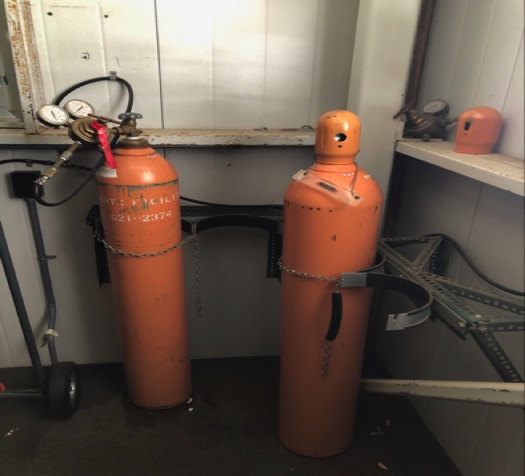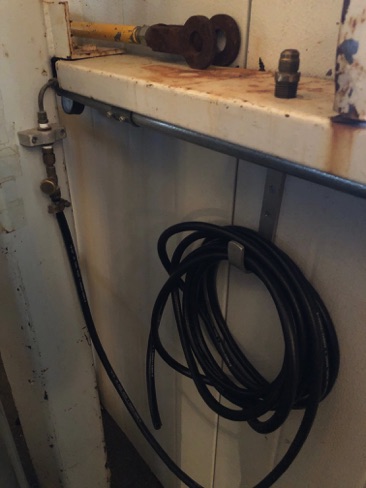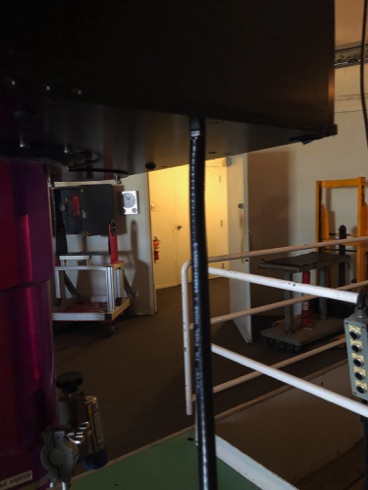
Nitrogen (N2) Purging
When humidity is persistently elevated, particularly during our summer monsoons, condensation can occasionally form on the windows of our detectors. This is usually seen as a round "blob" near the center of the FOV when performing imaging or an increase in blended light across the spectrum when doin g spectroscopy. Typically this can be resolved with the use of gaseous nitrogen (N2) blown across the window for a period of time. While this primer focuses on the 2.4m, this practive can be performed at both telescopes. While the setup at the 1.3m may look slightly different, the implementation is the same.
N2 bottles can be found stored in the southwest corner of the dome (west side of the polar axis at the 1.3m). One bottle will have a regulator mounted to it. See Figure 1. Open the valve on the top of the bottle (do not adjust the large valve on the regulator itself!) one full turn. If the gauge shows no pressure, let staff know so the bottle can be changed out.
Walk along the west wall of the dome looking for a coiled length of black tubing, attached at one end to a brass valve. See Figure 2. At the 1.3m, this line is simply stored alongside the N2 bottle, attached instead to a plastic block valve.
Uncoil the tubing and open the valve roughly 1/4- to 1/2-turn. At the 1.3m, there is no need to adjust the block valve. You should now be able to hear the N2 flowing from the tube. You can also feel it with your finger.
Take the open end of the tubing and attach it to the purge nipple on the instrument. Figures 3 & 4 show the nipple, as well as the line attached for OSMOS. Other instruments would have an equivalent connection. Staff can demonstrate connection location as necessary.
With the line connected to the instrument (Figure 4), N2 is flowing across the dewar window and removing the humidity/condensation. Typically, flow should be left for 10 to 25 minutes, depending on the severity of the condensation. While purging, the observer should take images, checking each frame to see if the situation is improving. Do so until all the condensation is gone.
In extreme cases during the winter, the condensation can actually freeze onto the window if left for too long. If this happens, no amount of N2 will correct the issue. Staff should be notified so they can resolve the issue, even if it means losing the night.




Figure 1: N2 Bottles and Regulator, 2.4m
Figure 2: Purge Line, 2.4m
Figure 3: Nipple on OSMOS at the 2.4m. Located SE of the CCD dewar.
Figure 4: Line connected on OSMOS, 2.4m